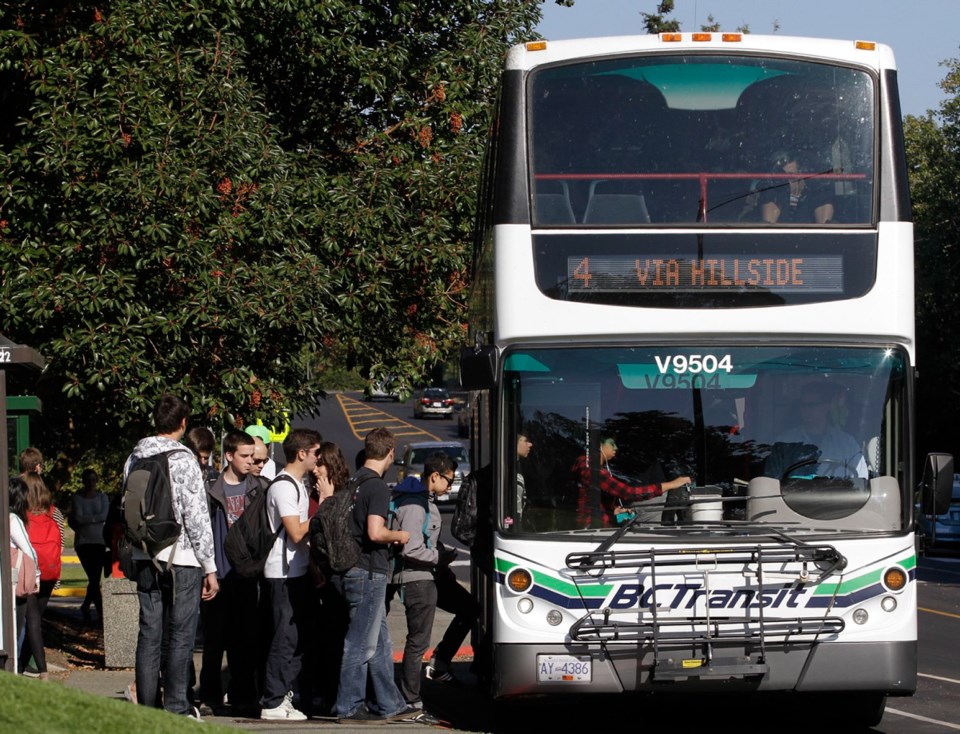More double-decker buses could be rolling along B.C. roads now that B.C. Transit is seeking interest from manufacturers.
Transit is suggesting that the first potential delivery could start late in 2016.
Double-deckers are already a familiar sight in the capital region. Of B.C. Transit’s 69 double-deckers, 62 are in Greater Victoria, with the remaining seven in Kelowna.
But it’s possible that new double-deckers could be used in other communities with high rider numbers, such as Nanaimo or Kamloops, Meribeth Burton, Transit spokeswoman, said Monday.
B.C. Transit runs more than 1,000 buses in the province.
The advantage of two-level buses? They can carry more passengers. A typical double-decker, with seating for between 76 and 84 riders, can hold 102 riders while a conventional bus carries 70, Burton said.
“The emissions on deckers would be the same as a conventional bus of the same year. So a 2008 double-decker and a 2008 conventional bus would have the same environmental standards and benefits. When it comes to choosing the right fleet component for the service area, the difference is passenger capacity,” she said.
“Having one double-decker on the road instead of two conventional buses to carry the same number of passengers during peak periods can reduce GHGs [greenhouse gases].”
In Victoria, double-deckers are mainly used on routes serving Camosun College and UVic.
Transit has published a request for expressions of interest for suppliers of heavy-duty, low-floor, high-capacity double-decker buses. Low floor means there are no steps at the entrances to the bus.
They must run on diesel fuel. Each would have air conditioning, similar to existing double-deckers in Transit’s fleet.
The request does not specify numbers of buses or cost.
“Any significant investment in infrastructure would have to be discussed with and approved by the governing bodies of local transit systems, i.e. Victoria Regional Transit Commission,” she said.
There are a number of bus manufacturing companies in North America, and the idea is to see how the marketplace responds before issuing a request for proposals, Burton said.
Interest in double-deckers is taking place as passenger numbers increase within the Victoria Regional Transit Commission’s system, part of B.C. Transit.
Ridership climbed 5.5 per cent to 25.4 million trips in 2013-2014, from 24.1 million trips the previous year, the agency said last month.
B.C. Transit led the way in May 2000 when it unveiled the first double-decker buses to be used for regular transit service in North America.
Double-deckers are also used in Victoria by the tourist sector, touring visitors around the region.



